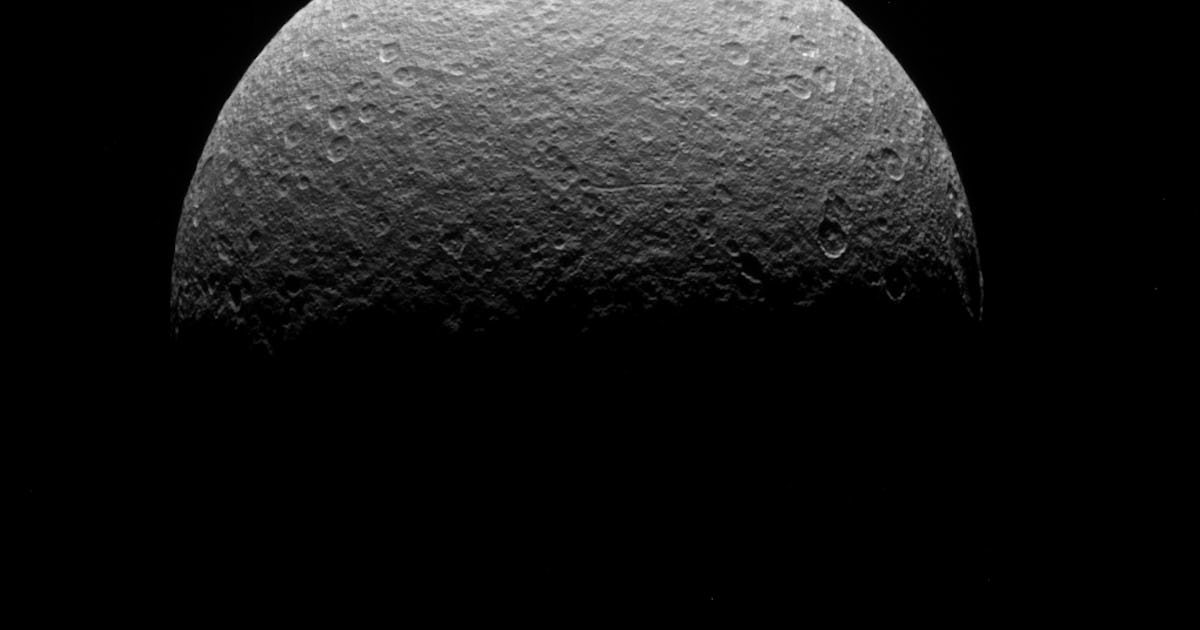
Cassini performed a spectrographic analysis, collecting ultraviolet imaging data of the moon and its chemical make-up, confirming that its surface was made up of ice.
The team reanalyzed the data collected by one of Cassini's Rhea flybys, and ran experiments here on Earth to see if they could identify the chemical make-up of the molecules which produced the unknown absorption band.The team behind the new study analyzed the data collected by Cassini's Rhea flyby, and ran lab experiments to test out different molecules and see which one would have produced the unknown signal.Curiously, these simulations suggest Rhea's lunar neighbor, Titan, Saturn's largest moon, may be have to do with the presence of hydrazine.Titan may be emitting nitrogen molecules towards Rhea, which would then interact with the radiation on the moon to convert nitrogen into hydrazine, the researchers suggest.